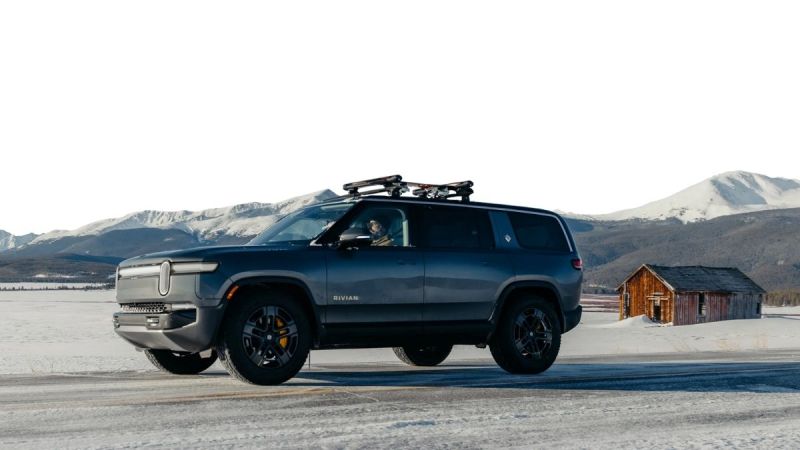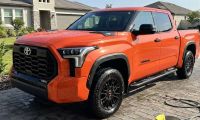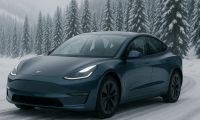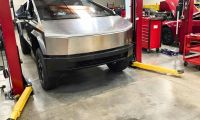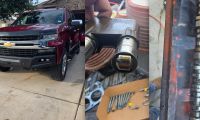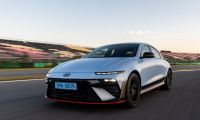Rivian's Ascent: How Adventure-Focused EVs Are Quietly Nudging Aside the Cybertruck Aura, Even in Tesla's Backyard
It’s a funny thing happening here in Bend, Oregon. This town bleeds outdoor adventure, and lately, it’s also bleeding Rivian. Anecdotally, you see almost as many R1Ts and R1Ss silently gliding around town, caked in trail dust or hauling mountain bikes, as you do Teslas. This is despite a massive, gleaming Tesla dealership and service center prominently displayed, and, as far as official Rivian infrastructure goes, tumbleweeds. It’s a grassroots phenomenon that speaks volumes about who Rivian is resonating with, and it hints at why they're increasingly seen as the preferred, perhaps more grounded, alternative to Tesla, especially when you glance at the… well, unique Cybertruck. Rivian's latest financial report, while still reflecting the tough climb of a new automaker, shows a company steadily building on this appeal.
Financial Snapshot: Less Rocket Emoji, More Sensible Shoes
Rivian’s Q1 2025 financial results showed a company making tangible progress. They reported their second consecutive quarter of positive gross profit at $206 million, a significant milestone that even unlocked an expected $1 billion investment from Volkswagen Group. Production hit 14,611 vehicles with 8,640 delivered, aligning with their guidance. Now, let's be clear, they're still losing a chunk of change overall (net loss was $541 million, though much improved year-over-year) as they scale and invest heavily in the upcoming R2 platform (AInvest). They did revise their full-year delivery outlook slightly downward to 40,000-46,000 vehicles, citing global trade impacts, which is a dose of reality every EV maker is tasting. But the march towards better margins per vehicle and a path to overall profitability seems clearer. It’s less about a "funding secured" tweet and more about the hard craft of actually building and selling desirable trucks and SUVs.
The Anti-Cybertruck: Why Rivians Just Feel Right for the Outdoors
This is where Rivian truly shines, especially against the backdrop of Tesla’s, shall we say, boldly angular Cybertruck. While the Cybertruck looks like it escaped from a 1980s sci-fi movie set (and might struggle with a car wash, or a tight parking spot, or a strong gust of wind), Rivian opted for designs that are ruggedly handsome, clearly capable, yet friendly and approachable. They look like trucks and SUVs that actual truck and SUV buyers want (RealTruck). Here in Bend, where your vehicle is often an extension of your adventure gear, the R1T's clever gear tunnel (perfect for muddy boots or charging cables), the available camp kitchen, and its genuine off-road prowess speak directly to the lifestyle. It’s a vehicle that says, "I can haul your kayaks and look good at the brewery afterwards," without screaming "I might be driven by a Martian." The Cybertruck, for all its supposed toughness, often feels more like a statement about its owner than a practical tool for the wilderness.
Beyond the Shiny (and Sometimes Pointy) Exterior: Rivian's Quiet Advantages
Rivian’s appeal isn't just skin deep. While Tesla boasts its Supercharger network, Rivian is thoughtfully building out its Rivian Adventure Network in strategically adventurous locations, alongside an increasing number of Waypoint chargers at popular spots. Plus, with Tesla opening its network and Rivian providing NACS adapters, charging is becoming less of a brand-specific battle. Many users also report a higher perceived build quality and interior refinement in Rivians compared to some Teslas, with fewer panel gaps and a more premium cabin feel. Then there's the brand image itself. Rivian has cultivated an aura of understated capability and environmental consciousness, often without the daily headline drama associated with Tesla's CEO. For a growing number of consumers, that lower-key, focused approach is a significant plus.
The R2 Ruckus: Has Rivian Caught Lightning in a Bottle (Again)?
If the R1 series was Rivian proving they could build incredible adventure vehicles, the upcoming R2 platform (and the surprise R3/R3X) is their play for the mainstream, and the public reaction has been nothing short of electric. When CEO RJ Scaringe unveiled the R2, starting at a more accessible $45,000, it felt like a "Tesla Model 3 moment." Pre-orders reportedly surged past 100,000 in a very short time, a level of organic enthusiasm many EV startups can only dream of. The R2 (and its even more compact R3 sibling) seems to hit a sweet spot: Rivian design DNA, practical sizing, good range targets, and that crucial lower price point. It’s the kind of product lineup that could genuinely sway mass-market buyers looking for a capable, stylish, and adventure-ready EV that isn't another Tesla Model Y or a, well, Cybertruck. The excitement is palpable, suggesting a deep well of potential customers eagerly awaiting its 2026 launch.
Wrapping Up
Rivian's journey is far from over, and the path to sustained profitability in the automotive world is notoriously challenging. However, their latest financial report shows a company making smart moves, improving efficiency, and, crucially, building vehicles that resonate deeply with a significant and growing segment of the market – especially those who want their EV to be as ready for a mountain trail as it is for a grocery run. The sheer number of Rivians popping up here in Bend, often miles from the nearest service center, is a testament to the brand's powerful word-of-mouth appeal and its ability to deliver on what adventure-minded EV buyers truly want. While Tesla still dominates the overall EV sales charts, Rivian is carving out an incredibly strong niche and, with the R2 on the horizon, looks poised to become much more than just an alternative; they're becoming a destination brand in their own right.
Image source: Rivian
Rob Enderle is a technology analyst at Torque News who covers automotive technology and battery developments. You can learn more about Rob on Wikipedia and follow his articles on Forbes, X, and LinkedIn.


